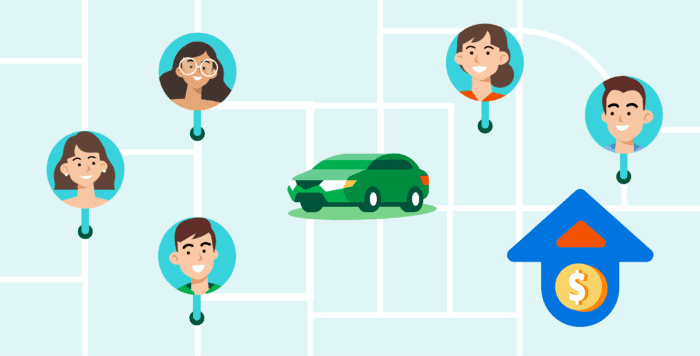When you book a ride on a rainy day, you might find that fares are higher. This happens when there are more people booking a ride than there are driver-partners available in the vicinity at the same time.
Other than demand and supply, the fare is influenced by other related factors, such as the route distance and estimated journey time based on live traffic signals. That’s why during peak hour, the fare might go up temporarily.
As a matching service between passenger and driver-partner, Grab’s platform is designed to strike a balance between affordability, while offering a fare that is sustainable for driver-partners.
Rebalancing the market
Grab’s pricing is dynamic because it changes according to real-time conditions such as demand and supply. It also helps to automatically rebalance the market to help everyone who needs a ride get one:
- Driver-partners are notified in their driver apps when demand increases through a heat map which will show the busiest areas. This signals more to head towards areas with more booking requests, resulting in more rides to go around.
- The spike in demand eases as passengers who prefer to wait for the higher prices to pass will hold off on booking temporarily.


Why is dynamic pricing necessary?
Dynamic pricing ensures that fares are rebalanced to bring supply and demand back to equilibrium.
When demand outpaces supply, the higher fares help to signal for more driver-partners to turn on their apps and join the flow. Since our driver-partners choose what time they prefer working, this helps to get more cars on the roads when demand is high.
Dynamic pricing is also necessary given that Grab is a two-sided platform that has to take into account the needs of both driver-partners and passengers. Passengers want affordable transport while driver-partners seek to maximise earnings.
Only seeking to push fares down would eventually result in driver-partners dropping off if they are not fairly compensated. This circles back to the market in the form of a supply crunch, and could result in riders finding it hard to get a ride when they want.
In 2017, regular taxis in Singapore also rolled out dynamic pricing, in a bid to fix demand-supply imbalances that came with the fixed nature of metered fares.
3 Media Close,
Singapore 138498
Komsan Chiyadis
GrabFood delivery-partner, Thailand
COVID-19 has dealt an unprecedented blow to the tourism industry, affecting the livelihoods of millions of workers. One of them was Komsan, an assistant chef in a luxury hotel based in the Srinakarin area.
As the number of tourists at the hotel plunged, he decided to sign up as a GrabFood delivery-partner to earn an alternative income. Soon after, the hotel ceased operations.
Komsan has viewed this change through an optimistic lens, calling it the perfect opportunity for him to embark on a fresh journey after his previous job. Aside from GrabFood deliveries, he now also picks up GrabExpress jobs. It can get tiring, having to shuttle between different locations, but Komsan finds it exciting. And mostly, he’s glad to get his income back on track.

